
Home
– Home: Jan 25, 2022
– Home: Dec 31, 2020
– Home: Dec 31, 2019
– Home: Mar 30, 2019
– Home: Jan 10, 2018
– Home: Sep 1, 2017
– Home: Sep 1, 2016
– Home: Dec 20, 2015
– Home: Sep 1, 2015
– Home: Feb 27, 2015
– Home: Oct 25, 2014
– Home: Sep 1, 2013
– Home: Dec 20, 2012
– Home: Jan 11, 2012
– Home: Nov 1, 2011
– Home: Jan 6, 2011
– Home: Oct 1, 2010
– Home: Sep 1, 2009
– Home: Sep 1, 2008
– Home: Sep 4, 2007
– Home: Mar 18, 2007
– Home: Feb 11, 2007
– Home: May 24, 2005
– Home: May 11, 2005
– Home: May 2, 2005
– Home: Apr 23, 2005
– Home: Apr 12, 2005
– Home: Apr 2, 2005
– Home: Mar 29, 2005
– Home: Jun 10, 2004
– Home: Apr 17, 2004
– Home: Apr 6, 2004
– Home: Mar 16, 2004
– Home: May 28, 2003
– Home: May 15, 2003
– Home: May 6, 2003
– Home: May 1, 2003
– Home: Apr 29, 2003
– Home: Apr 26, 2003
– Home: Apr 24, 2003
– Home: Apr 16, 2003
– Home: Apr 11, 2003
– Home: Apr 5, 2003
– Home: Mar 30, 2003
– Home: Mar 27, 2003
– Home: Mar 25, 2003
– Home: Feb 21, 2003
– Home: Apr 22, 2002
– Home: Apr 16, 2002
– Home: Apr 12, 2002
– Home: Apr 9, 2002
– Home: Apr 7, 2002
– Home: Apr 1, 2002
– Home: Mar 28, 2002
– Home: Mar 24, 2002
– Home: Mar 19, 2002
– Home: Mar 13, 2002
– Home: Mar 11, 2002
– Home: Mar 4, 2002
– Home: Apr 2, 2001
– Home: Jan 8, 2001
– Home: Aug 17, 2000
– Home: Jun 9, 2000
– Home: Apr 25, 2000
|



|
Also Visit:
Junos
Irises
HardyBulbs
The Garden
Algonquin Park
Questions?
Comments
Orders
|
|
Awarded the British Iris Society's Foster Memorial Plaque (2010) and their Hybridisers Award (2016)
Awarded the American Iris Society's Hybridiser Award (2019)
Jan 25, 2021
From about 2003, when I saw that orange was possible due to Çat ANMc2175, I've been tracking my use of it in crosses. At the time the goal was simply to make more use of it; including in higher level crosses. It is also responsible for the brown "accents" in my hybrids, such as Orange Glow (98-OO-1), It's Magic (05-HW-1), 12-KE-7, etc. We additionally now know Halkis is also 2n=18. For interest sake I have added the % of Iris danfordiae, sophenensis, Çat ANMc2175, and Halkis to 2n=18 hybrids. These are rounded to integers for simplicity -- so if you see 12 or 13 it really is 12.5% -- the rounding up or down is so the totals shown always add to 100% (my database has the precise values). Of course these days, what I would really like to know is what are the genetic switches that produced Tequila Sunrise (09-LE-2), Leopard (12-IO-1), and 14-KV-1, etc... and how can I "turn on" normal standards, plus increase flower size [diploid danfordiae, and Çat ANMc2175 have small flowers, and typically pass that to their children].
In 2019 I was able to start using halkis again in my crosses, so it will still be a few years before I see the results of that work - certainly the number of bicolour flowers should increase [yikes that will be about 10 years from now] Markus Meditsch's two F1 hybrids from a cross with Down To Earth are shown on the halkis webpage. Unfortunately halkis seems to have disppeared from the trade in Holland !
There are more bits and pieces to be updated on the website. Time will tell when I have a chance to get to them.
Dec 31, 2020
What a year! I continued to be extremely tied up in 2020 for reasons I won't go into. As a result I haven't done any work on this website until the end of December. The year started off well enough with my 13th annual trip to Holland by way of England and then Paris in Febrary and the beginning of March. Unfortunately bloom in Holland was a bit behind this year, so I didn't get to see as many of my hybrids blooming in the field as I typically do. I did however get to see Tequila Sunrise (09-LE-2) and Orange Delight (09-HT-1) in bloom, both of which needed to be resubmitted to the lab for conversion to polyploid. As a result I was able to mark them, and thus ensure the correct varieties were sent.
Unfortunately because of COVID I won't be visiting Holland in 2021 ...hopefully in 2022.
I haven't yet been sent 2020 sales data, or 2020/21 planting information, so I don't know how much of the larger stocks we have. Early in 2020 I suggested to the grower that we hold off sales of Eye Catcher (98-NP-4) for 2 years in order to build the stock. Demand has been great, but we don't have enough bulbs to supply that demand; plus there is a tendancy to oversell due to late orders from wholesalers who in turn received late orders from retailers -- a whole chain of people we don't want to disappoint if we can help it. This happened for several years, so holding off sales of Eye Catcher is the only way we can get our head above water so-to-speak. I do expect Eye Catcher will be available in 2022.
From pictures of the small stock bulbs that Jan Ligthart sent at the end of Speptember there are a number of special varieties that will be blooming in 2021 such as Leopard (12-IO-1). The lesson leaned fromm Eye Catcher is, we will definitely need to have a significantly larger stock when Leopard is introduced. From pictures posted on Facebook it's clear there is a significant interst in Leopard. Too bad tissue culture propigation continues not to be a viable option to build stock.
Welcome! This website shows my work with Reticulata Iris. I have created some truly amazing new colours and patterns that were never imagined possible. A large amount of my success is as a result of plant collecting in Turkey in 1985, and in successfully collecting a diploid form of Iris danfordiae, as well as Çat ANMc2175, along with Frank Kalick kindly providing me Iris sophenensis in 1987. I didn't know it at the time, but all three are 2n=18, and hybrids between them are fertile. It turns out that Halkis, collected by Norman Stevens from the Halkis mountains in Turkey, is also 2n=18 (I originally thought it was 2n=20). Being pure species, initial crosses were very uniform. Its only in subsequent generations that things open up. The most amazing thing is, you don't know what is possible until you see the resulting creations. It would be nice if the hybrids were bigger, and if they had normal standards (an additional canvas for nature to paint), but the tendancy for small size is due to diploid danfordiae and Çat being naturally small. "Hairs" for standards are a result of danfordiae's standard being a bristle. Nothing is so perfect that it can't be improved upon. For a number of reasons I have invested in the conversion of Reticulata Iris into polyploids (e.g. tetraploids, and octoploids). Tetraploids appear to have 15-25% larger flowers, along with slightly sturdier stems and very slightly thicker petals. I've been warned that octoploid flowers can be smaller; perhaps due to slower cell division (mitosis). Ideally at the tetraploid level 2n=18 and 2n=20 Reticulatas could be crossed and remain fertile (i.e. 4n=36 x 4n=40 would give 4n=9,9,10,10 children; and these could cross with each other and remain fertile giving a new lineage). Similarly, at the tetraploid level we could have a fertile Katharine Hodgkin -- I'm not expecting a huge range of expession from Iris histrioides and winogradowii, but you won't know unless you try.
I've opened up a whole new world. Let's see where it takes us.
It takes 5 years to go from a seed to a flowering bulb. It then takes 12 years or more years to go from that one flower to 50,000 when potentially sales can start.
It's a matter of luck, understanding science, a bit of intuition,
...plus lots of patience!
Lost ?
- Click the link By Year, etc. here or at the lower left to see my hybrids ordered by the year they were hybridized
- Another good place to start is The Big Picture
- Try exploring the links. See the parents, and grandparents of a variety. In a number of cases you can even see a hybrid's children. For example Storm (98-NP-2)
|
|
|
|
Some Of 2020's Wonderful New Hybrids
|
Continuing to do well are:
|
|

|
Where to Buy (2021)
Large-scale sales of a few of my hybrids are under way. It takes over 12 years to multiply 1 bulb to 30,000. It would be nice if some of the amazing 2016 and 2017 hybrids were available now, but you have to be patient -- there was only 1 flower of each variety in the whole world in those years. In the meantime there are many amazing hybrids available now, such as Eye Catcher, Sea Breeze, White Caucasus, etc., with many more to come. In coming years you can look forward to: Holland Glory / Holland's Glorie, Lilac Beauty, Wow, It's Magic, Pièce de Résistance, and more.
Reticulatas are a welcome pick-me-up to the end of Winter / start of Spring, blooming right as the snow disappears. Even better yet, you can enjoy a small pot indoors while snow swirls around outside, reminding you of all the wonderful things that will soon be blooming outdoors.
I look forward to bring you more of my unique creations, as together, we show Dutch bulb growers as well retailers around the world, that there is a strong demand for them.
Available in modest quantity:
Unavailble for 2021 & 2022 -- building stock
-- It's the only way we'll have enough bulbs --
|
Limited availability in 2021
|
Dutch Bulb Grower:
Europe:
And fine retail nuseries: Broadleigh, Pottertons, and Rare Plants
North America:
|
(Click photos to enlarge them)
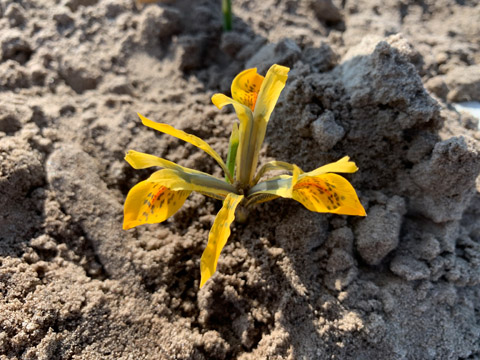
Original Orange Delight (09-HT-1) Mar 7, 2020 F3-50/38/12/0 Orange Delight (09-HT-1) Mar 7, 2020 F3-50/38/12/0
97-BG-1 x 03-AJ-2
In Holland
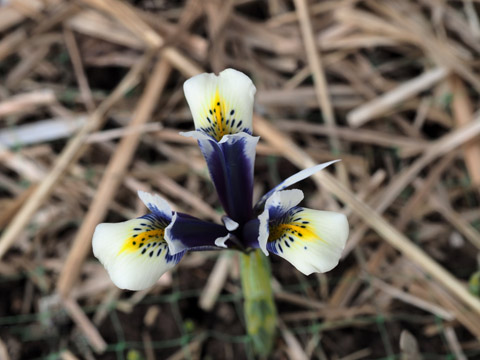
Original 13-FD-1 F4-50/50/0/0 13-FD-1 F4-50/50/0/0
08-FP-1 X ?
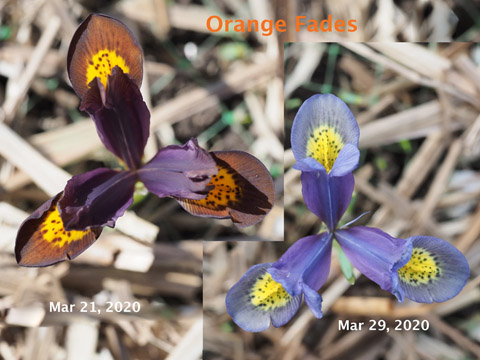
Original 13-BP-8 F4-56/31/13/0 13-BP-8 F4-56/31/13/0
98-NP-2 x 00-JB-1
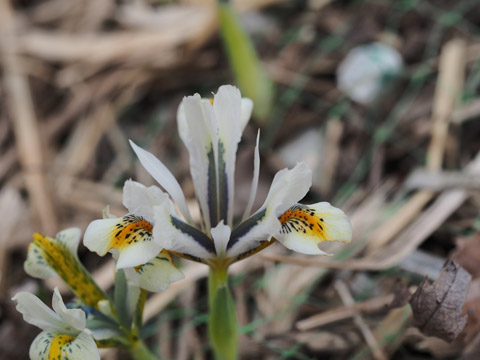
Original 11-EC? ~F3-?/?/?/? 11-EC? ~F3-?/?/?/?
? [94-HW-2 x 03-CV-4]
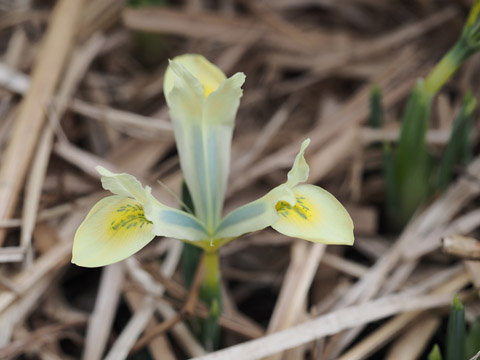
Original 09-MH-2 F4-62/32/6/0 09-MH-2 F4-62/32/6/0
03-GP-1 x 02-EY-1
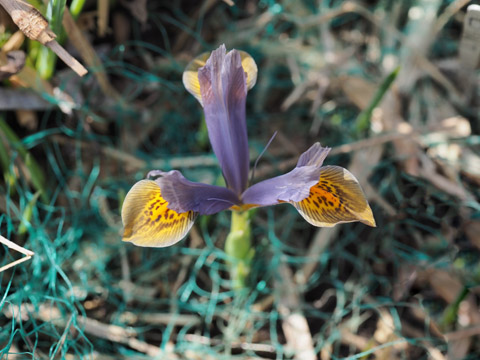
Original 09-KT-4 F3-50/38/12/0 09-KT-4 F3-50/38/12/0
97-CQ-1 x 03-AJ-1
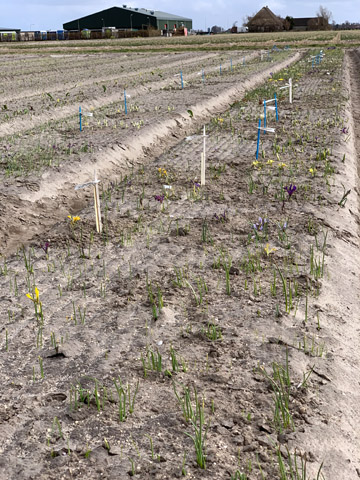
Original Sparse Bloom in Holland while I was there (Mar 2020) Sparse Bloom in Holland while I was there (Mar 2020)
|



